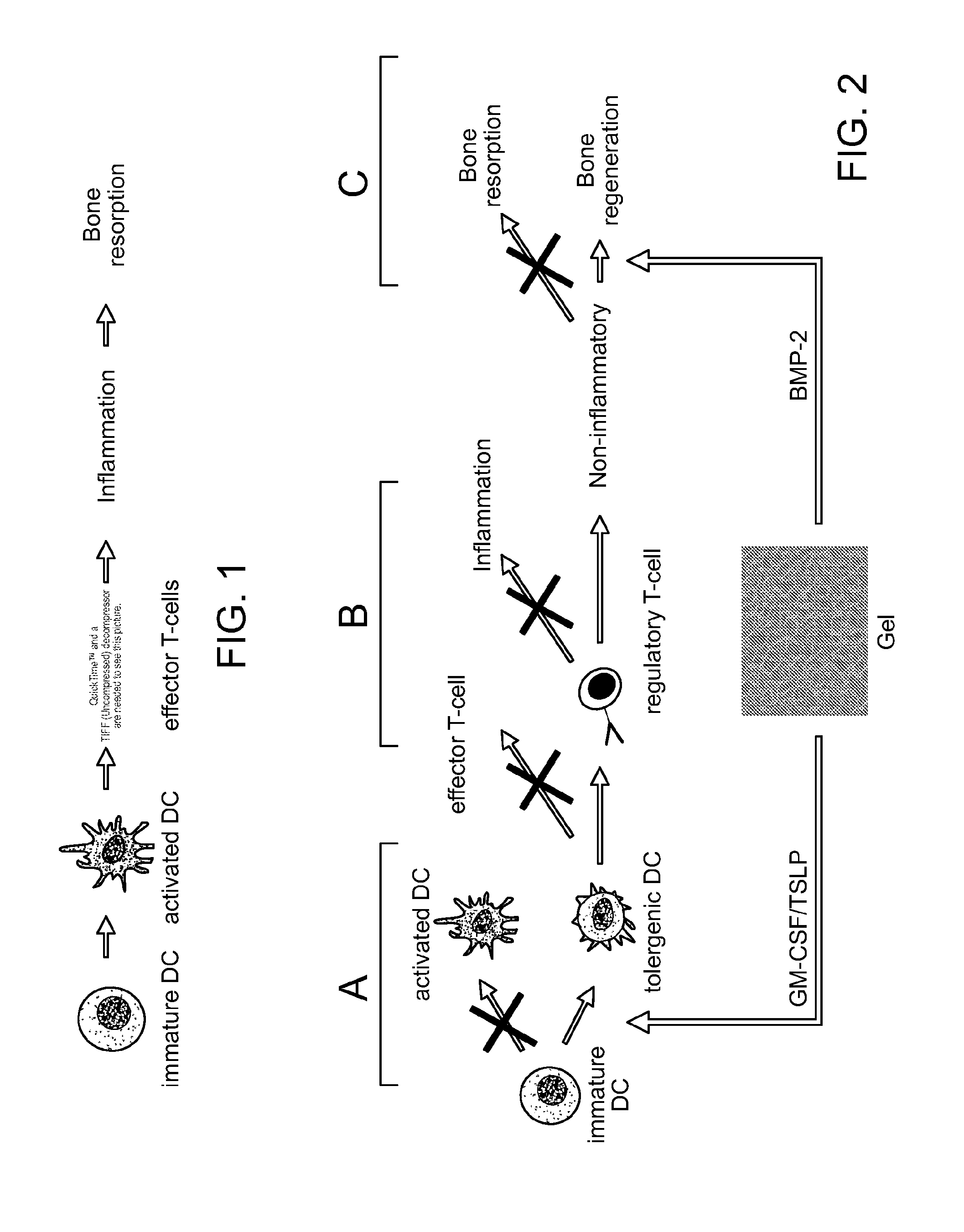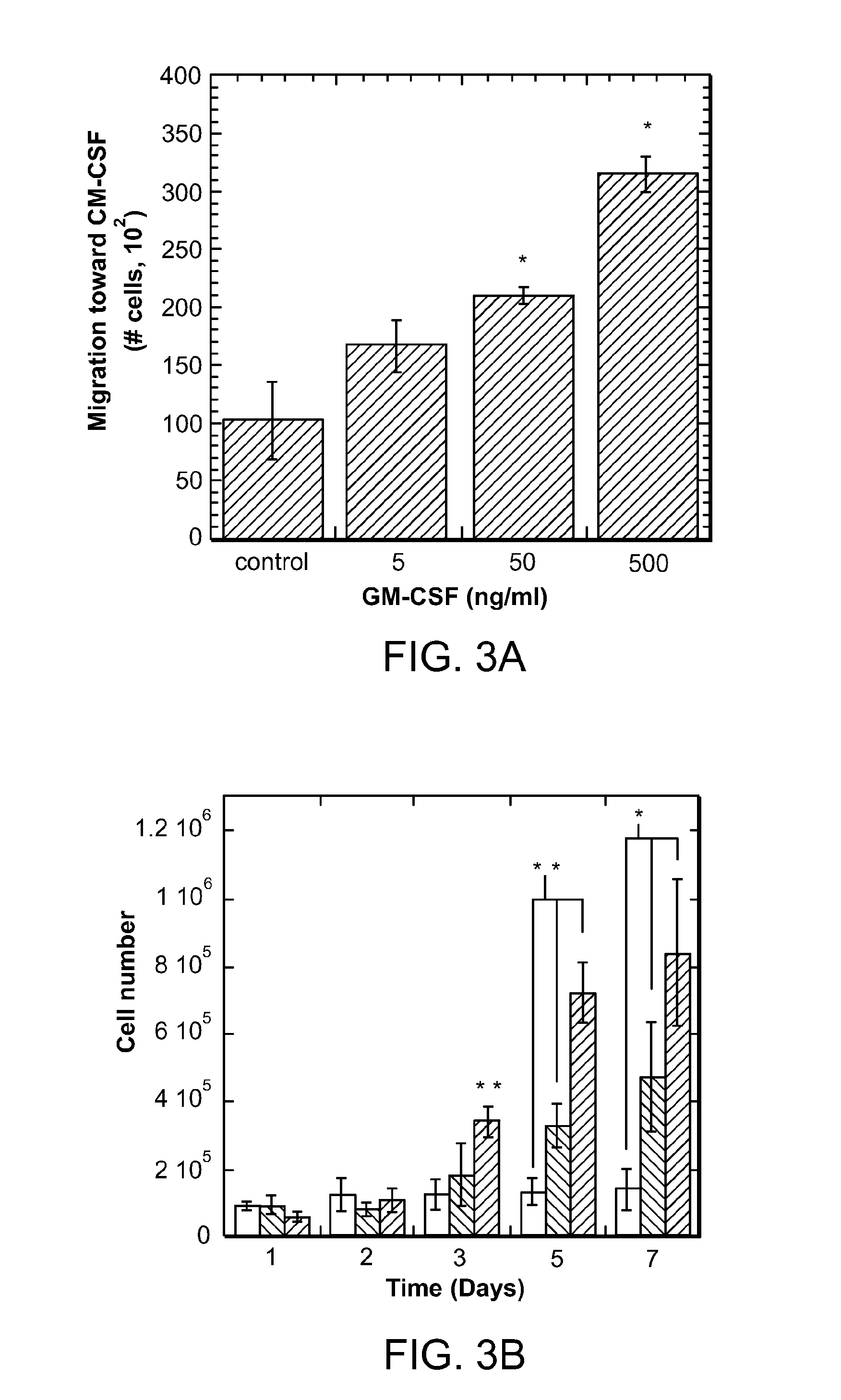Programming of cells for tolerogenic therapies
a technology of tolerogenic therapies and cells, applied in the field of immune tolerance, can solve the problems of little or no effect, and achieve the effects of enhancing th2 immunity, reducing t reg numbers, and altering balan
- Summary
- Abstract
- Description
- Claims
- Application Information
AI Technical Summary
Benefits of technology
Problems solved by technology
Method used
Image
Examples
Embodiment Construction
[0049]The scaffolds and systems described herein mediate spatiotemporal presentation of cues that locally control DC activation and bias the immune response towards a non-pathogenic state. The scaffolds and methods are used to treat subjects that have been identified as suffering from or at risk of developing diseases or disorders characterized by inappropriate immune activation. The biomaterial systems (loaded scaffolds) recruit DCs and promote their activation towards a tolerogenic or non-inflammatory phenotype (autoimmunity / inflammation) or an activated state (allergy / asthma) that corrects an aberrant or misregulated immune response that occurs in a pathologic condition.
[0050]For autoimmune disease, the scaffolds comprise an antigen (autoantigen), a recruitment composition, and a tolerogen. For allergy or asthma, the scaffolds comprise and antigen (allergen), a recruitment composition, and an adjuvant (e.g, a Th1 promoting adjuvant such as CpG). Generation of Treg cells leads to ...
PUM
| Property | Measurement | Unit |
|---|---|---|
| concentrations | aaaaa | aaaaa |
| concentrations | aaaaa | aaaaa |
| time- | aaaaa | aaaaa |
Abstract
Description
Claims
Application Information
 Login to View More
Login to View More - R&D
- Intellectual Property
- Life Sciences
- Materials
- Tech Scout
- Unparalleled Data Quality
- Higher Quality Content
- 60% Fewer Hallucinations
Browse by: Latest US Patents, China's latest patents, Technical Efficacy Thesaurus, Application Domain, Technology Topic, Popular Technical Reports.
© 2025 PatSnap. All rights reserved.Legal|Privacy policy|Modern Slavery Act Transparency Statement|Sitemap|About US| Contact US: help@patsnap.com



